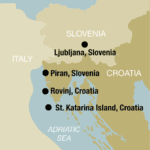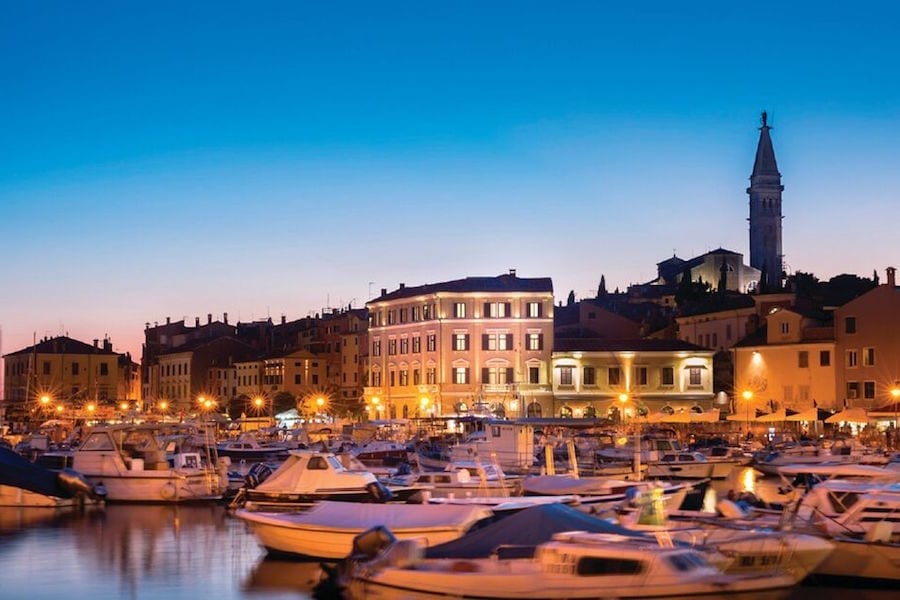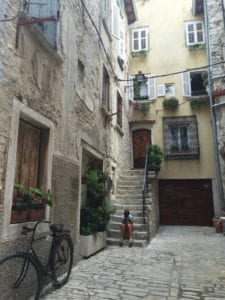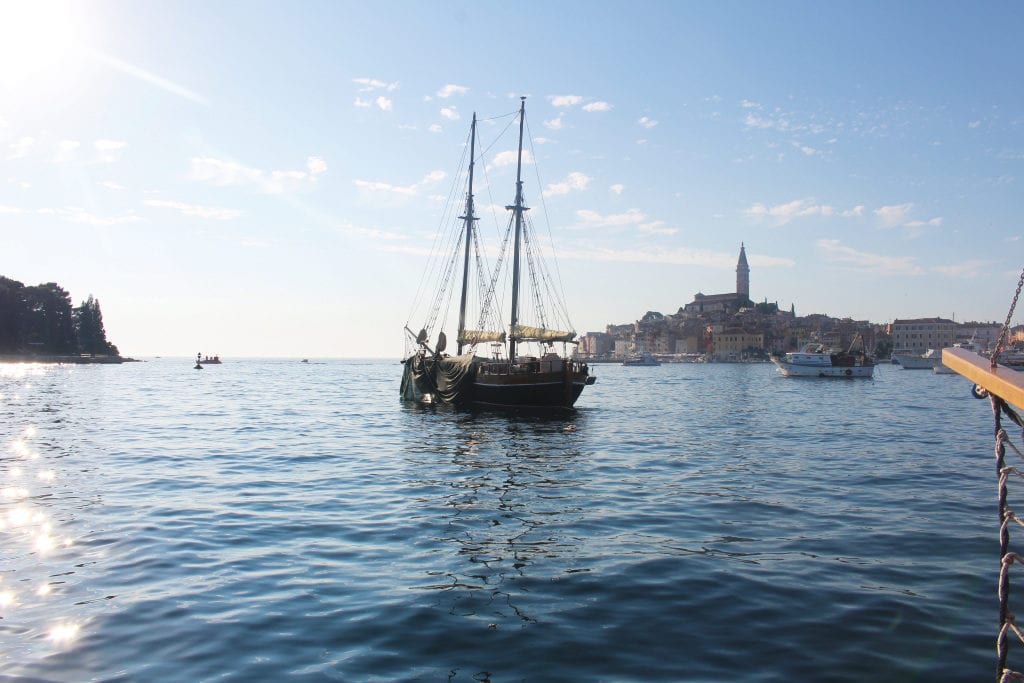The natural beauty and magnificent shoreline of the Adriatic coast
By multiple writers with Amy Zimmer
Photographs courtesy of Maistra
 Croatia’s rich history and magnificent shorelines along the Adriatic coast boast more than two millennia of ancient walled towns and a thousand islands straddled by sapphire waters. Croatia has emerged as a destination spot for the connoisseur of rich history and natural beauty and is ranked the 18th most popular tourist destination in the world for a reason.
Croatia’s rich history and magnificent shorelines along the Adriatic coast boast more than two millennia of ancient walled towns and a thousand islands straddled by sapphire waters. Croatia has emerged as a destination spot for the connoisseur of rich history and natural beauty and is ranked the 18th most popular tourist destination in the world for a reason.
Settled by Croats in the early 7th century AD, Croatia has had a turbulent past. Yet her complicated history allows the discerning traveler a glimpse into the past with its robust inventory of ancient architecture and rich culture. Located between the Balkans and Europe, the first king of Croatia ruled in 925. Croatia remained a monarchy until the union with Hungary in 1102. The country later merged into the Kingdom of Yugoslavia and finally declared its independence in 1995. The results of the tumult are eclectic architectural relics reflecting the gamut of European history, from the prehistoric to the current unitary state governed under one parliament and a member of the EU.

American vacationers often take direct flights straight into Ljubljana, Slovenia’s capital. With only 10 days to explore, we decided to focus on the western Adriatic coast. An overnight stay is recommended to enjoy the Austrian Empire influence of the central square. The local cuisine and coffee shops are the perfect medicine to help recuperate from jet lag before heading to the medieval Castle of Ljubljana. According to archaeological surveys, this site has been settled continuously since 1200 BC. The castle’s history is representative of Croatia itself; architecturally comprised of both intricate and simple structures blended together over many years. While initially the castle served as a defense structure, it has had many functions and has been overhauled to meet demands. From a government structure housing the seat of lords to a penitentiary, residential complex and today a major cultural venue, the Castle of Ljubljana is as adaptive and historical as is Croatia.

Homes and businesses are squeezed in the narrow stone passages of a typical village like Piran. (Photo credit: Amy Zimmer)
In southwestern Croatia and a two-hour drive from Ljubljana is the picture-perfect town of Piran, known for its rich culture and the birthplace of composer and violinist Giuseppe Tartini and painter Cesare Dell’Acqua. Riddled with narrow streets and small shoulder-to-shoulder houses, Piran is a major tourist attraction with widespread culture and art. Piran’s aquarium, the Tartini theater, coastal gallery and museums underscore the national and international artists who gather to experience Piran, commonly referred to as the dream city.
Further south and another two-hour drive from Piran is the city of Rovinj. This pristine village is laden with creamy cobblestone pathways, colorful buildings, culinary delights of local seafood and farmers’ markets featuring local favorites, such as truffle oil, which certainly taps into all your senses. Rovinj’s bars, restaurants and art galleries rest along the main, fully pedestrian center of Carrera Street. Located in the heart of Rovinj is the Basilica of St. Euphemia. The church contains ancient treasures and works of art, dating back to 1736 with some parts dating earlier. A farmers market is located at the edge of the historic part of town, near Valdibora Square. But do not be fooled by the sleepy feel of this town; it boasts the second largest tourist destination in Croatia. While the city also has two luxury, 5-star boutique hotels, apart from hotels on the mainland, there are also a handful of hotels on small islands surrounding Rovinj, which are linked to the mainland by boats.
Archetypical of Croatia’s renowned island-speckled coastline is the island of St. Katarina, known as Red Island. Recognized for being one of the most beautiful islands of the Rovinj’s archipelago, St. Katarina is lauded for scientifically proven energy fields, from which visitors claim to feel their force. Meditation areas have been erected on the island because of reported positive effects on health and the gradual healing of the body. St. Katrina Island is replete with cultivated vineyards and olive trees. The northwestern side of the island is known for massive geological structures easing magically from the water. Named the Golden, the Silver and the Bronze Rock, these volcanic structures protrude to heights of 15 meters and fall vertically into the sea with a collateral depth of three and more meters.
Making your way through Croatia, the sheer breadth of her rich history and magnificent shorelines reminds you of a people who have endured, adapted, conquered and thrived. Croatia is a robust country with infinite exploration opportunities and for that reason alone has become a global tourist destination.

All types of boats and ships can be found in the Istrian peninsula in Rovinj, Croatia.

